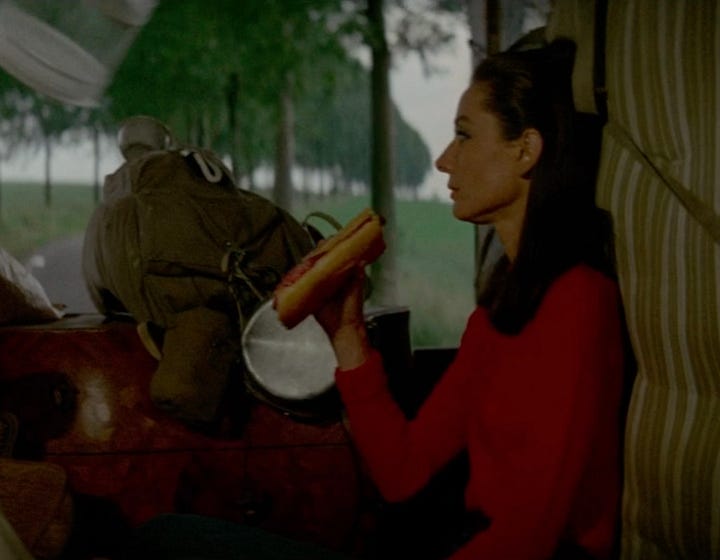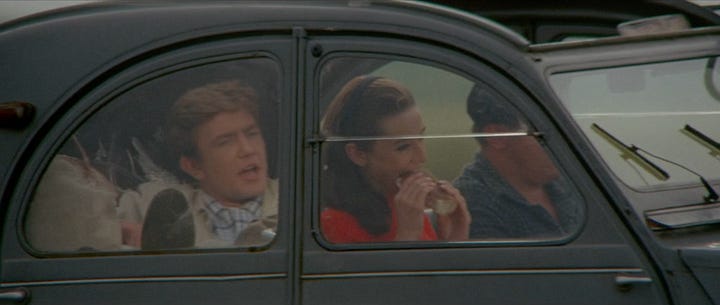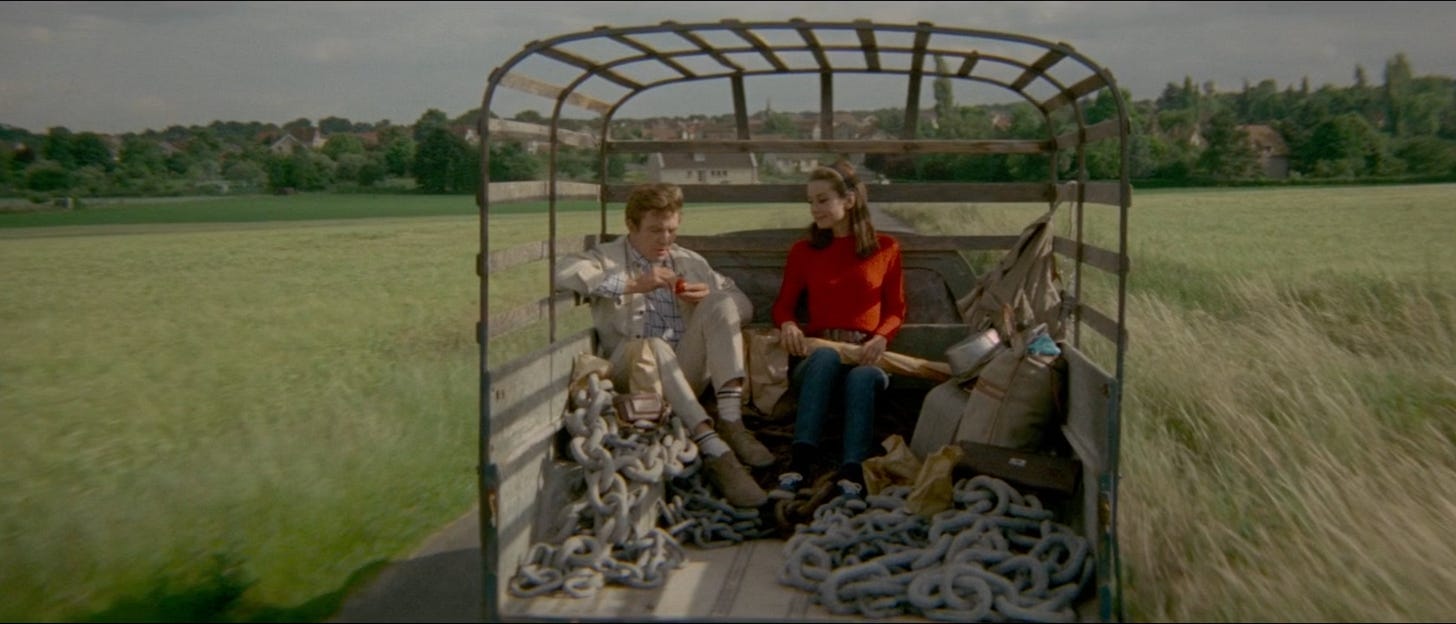Telling Stories Across Montage: TWO FOR THE ROAD
Montages tell a story, and most montages pass time one way or another. This Two for the Road sequence tells several stories at once, while passing years of time not linearly, but back and forth.
It’s a complex few minutes which unspools a decade of Joanna’s and Mark’s (Audrey Hepburn and Albert Finney) relationship, using several broad context clues and two specific things to ‘anchor’ its time and tales: fruit and vehicles.
Context Clues
Two for the Road covers ten years, moving back and forth through time similarly to this montage: without ceremony, but with plenty of context clues.
Fashion is always a good context clue, and Joanna’s and Mark’s wardrobe and hair change with the times, as well as getting fancier and more elaborate as they go from broke hitchhikers to well-off socialites.
We also get clues to Joanna’s and Mark’s status in life by the vehicles they’re in: they start hitchhiking in this sequence; next, Mark buys a junker which literally catches on fire; after a few years they own a stable sensible car; and finally they drive a faaaancy car.
In this montage their progression is more linear and covers a small span of time, but vehicles still signal shifts: they start by hopping into the bed of a work truck; then bob along in the back of a moving van; get cosy in a volkswagon beetle; ride up front in a truck cab; and finally (with a bigger time jump) cuddle in the back seat of a roomy, luggage-topped car.
Speaking and Eating as Continuance
The attention to detail to make the meals and sentences work across the flow, using words and food to pass the time, but also be playful and creative over edits.
Note how one hands the other an apple / sandwich / banana / etc, and then the next scene opens with them biting into it / finishing it.








The conversation works as several snippets as well as one large chat. We easily believe Mark and Joanna could have verbally wandered from topic to topic even as they physically move to new places, circling back around.
(It also creates a cheeky bit of double entendre with the banana peel.)
What’s important is the sentences make sense but feel like an easy camaraderie, and it also helps set us up for the final, larger story shift.
Stories Across Edits
Hearing their chatter and stories move across edits is the main way of ‘setting us up,’ but there’s another, subtler way, too.
We’ve already seen one mini-sequence of three edits: inside the car Joanna and Mark are hitchhiking in, then a suuuuper wide shot of the car, then returns to the car for more conversation.
So when Joanna gives the truck driver a bunch of grapes and the shot cuts to a wide of a truck —
— we likely assume this is a similar edit, and we’re seeing the truck Mark and Joanna are riding in.
However!
As the truck drives out of frame it reveals a car piled with luggage, then as Mark notes ‘lucky for you you’ll never meet her. She’s now Mrs. Howard Mawell Manchester” we get a closeup of a luggage tag clearly printed with that same ostentatious, unmistakeable name.
As though to be absolutely clear with us this is the same woman — as though an edit between the nametag and a new face could lead to possible misunderstanding — the camera pulls back to show us the occupants of the car: Mr and Mrs Howard Maxwell Manchester up front, Mark and Joanna in the back, touring the countryside as a foursome.


(well, fivesome . . . that’s a different story).
It’s a great little subversion of an edit just a few moments earlier in the montage, showing you can play with rules and structure even more if you’re clear about them.
Takeaways
First and most important: Albert Finney eats everything from apples to his lines with such delightful gusto! This, however, means it’s mostly impossible to get demure screenshots.
Montages are as varied and different as filmmakers, can cover minutes or years, have smooth flow or jarring cuts, use one or more or no devices to tie together edits and time jumps. But if you are, going to use a motif or item to tie together the whole sequence, or as Two for the Road does repeat one technique again and again and again to set audience expectations before upending them, don’t forget storyboarding and props and framing, because all of those will make a big difference to whether your conceit lands or not.







